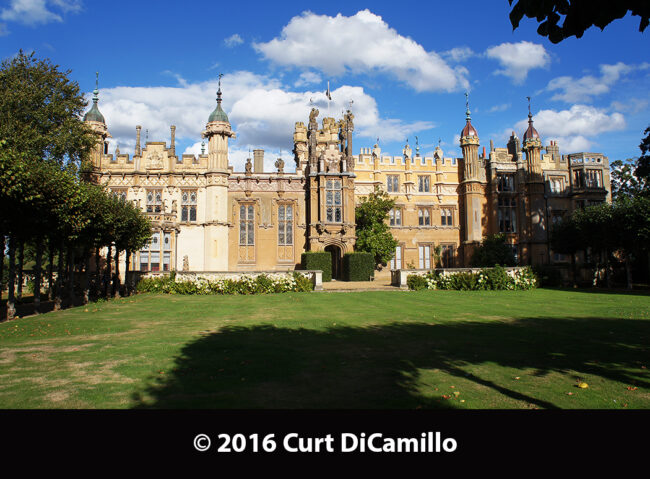
The garden facade
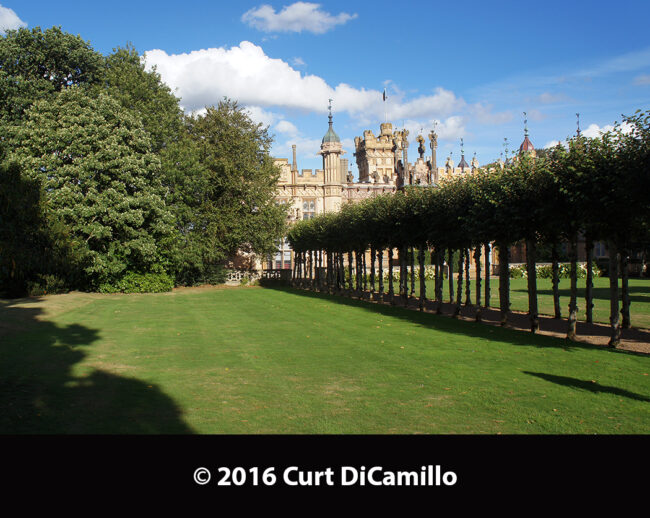
The garden facade
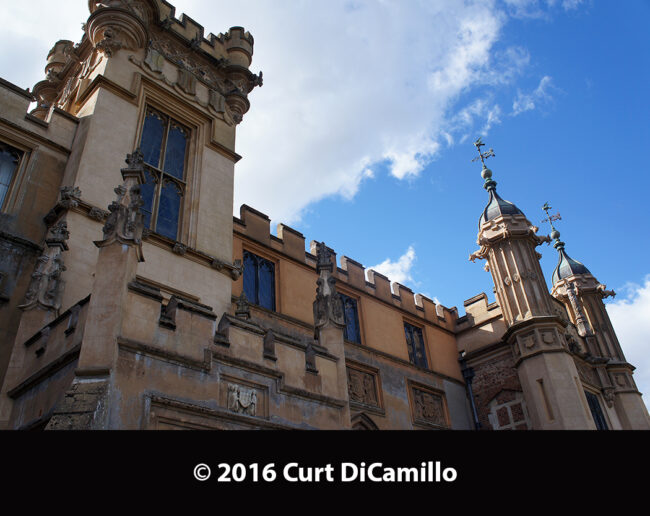
The entrance facade
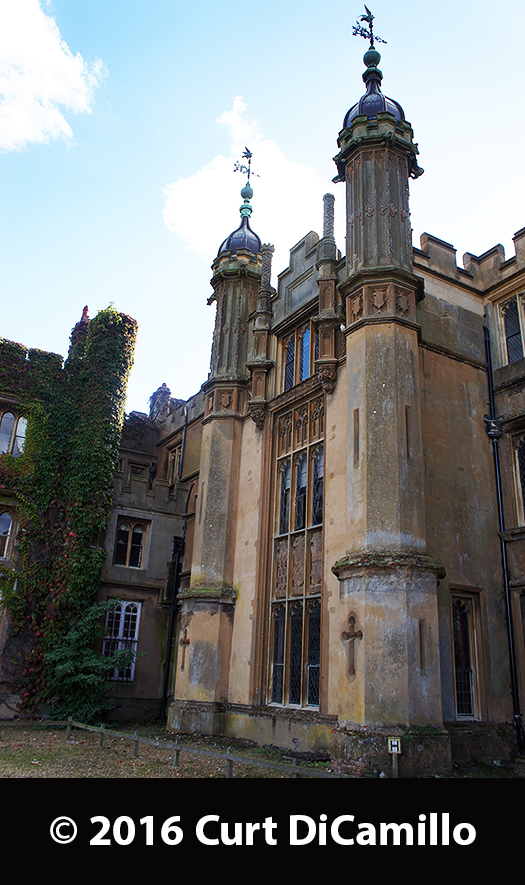
The entrance facade
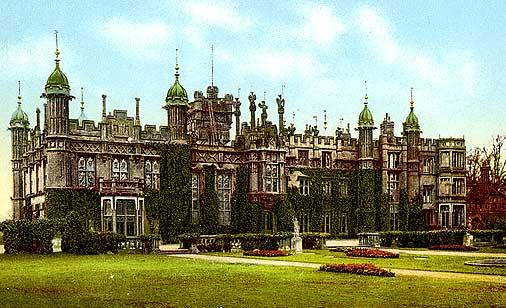
The garden facade from a circa 1910 postcard
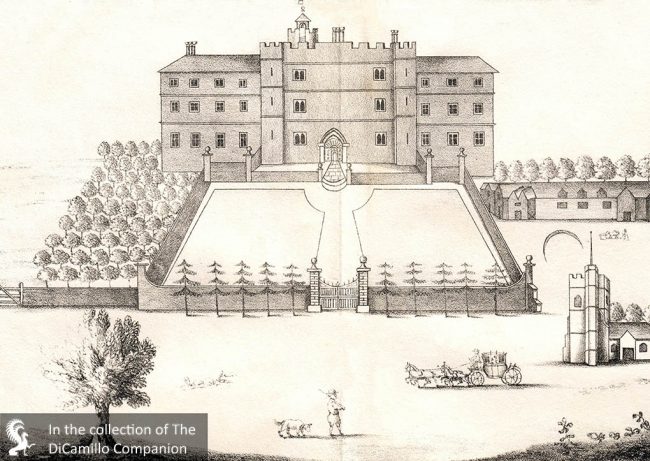
The house in the 17th century, from an 1826 lithograph that appeared in "Chauncey's Antiquities of Hertfordshire."
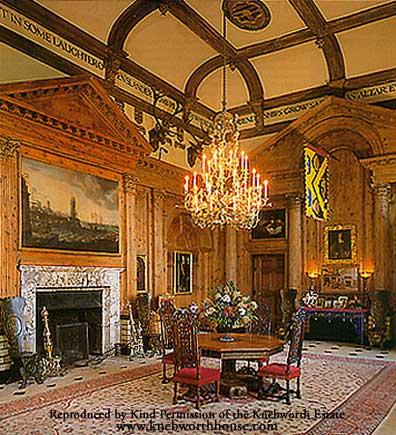
The banqueting hall
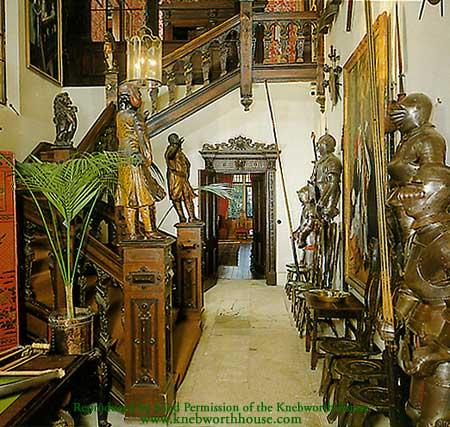
The armoury and the staircase
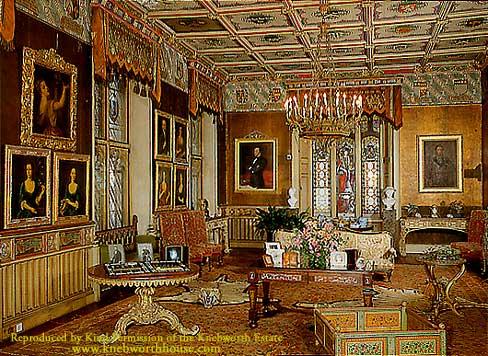
The state drawing room
House & Family History: Knebworth has been the home of the Lytton family since 1490. Constance Lytton, the suffragette, and Robert Lytton, viceroy of India, both lived here in the 19th century (Robert Lytton proclaimed Queen Victoria empress of India at the Great Delhi Durbar of 1877). One of the most famous residents of Knebworth was Lord Lytton, whose full name was Edward George Earl Bulwer-Lytton, 1st Baron Lytton. Born in 1803, Lytton is mostly remembered today as an anachronistic author whose name is associated with flowery writing. In fact, since 1982 the English Department at San Jose State University has held an annual Bulwer-Lytton Fiction Contest for bad writing, in which contestants are required to supply the openings of bad imaginary novels. The contest was inspired by Bulwer-Lytton's novel "Paul Clifford," which opens with the famous line "It was a dark and stormy night" (made most famous by the character of Snoopy in the comic strip "Peanuts"). Bulwer-Lytton is also noted for a variety of other famous phrases: "pursuit of the almighty dollar," "the great unwashed," and "the pen is mightier than the sword." Bulwer-Lytton was the youngest son of General William Earle Bulwer of Heydon Hall and Elizabeth Barbara Lytton, daughter of Richard Warburton Lytton of Knebworth. In 1838, at the height of his popularity, he was created a baronet by Queen Victoria. In 1843 he inherited the Knebworth Estate and, under the terms of his mother's will, added Lytton to his surname. In 1866 Bulwer-Lytton was raised to the peerage as Baron Lytton. He wrote in an exceptionally wide variety of genres, including science fiction, historical fiction, occult, mystery, and romance. Among his noted books are "Godolphin" (1833), "The Pilgrims of the Rhine" (1834), "The Last Days of Pompeii" (1834), and "Harold: Last of the Saxon Kings" (1848). "The Last Days of Pompeii" is probably the only one of his books still regularly read today; the novel was inspired by the painting on the same subject by the Russian painter Karl Briullov (Carlo Brullo), which Bulwer-Lytton saw in Milan. He also wrote "The Haunted and the Haunters" (1857), also known as "The House and the Brain," which was included by Isaac Asimov in his 1989 anthology "Tales of the Occult." Bulwer-Lytton's "The Coming Race" is an occult novel that is considered one of the seminal works in the creation of science fiction (there is a school of thought that considers the book a cornerstone in the formation of Nazi mysticism). It was during Lord Lytton's time that Knebworth's interiors were redone by John Hardman and John Crace, the latter being one of the most noted interior designers in Victorian England (he worked with Pugin on the interiors of the new Palace of Westminster). Queen Elizabeth I, Charles Dickens, and Sir Winston Churchill all visited the house. Knebworth is used frequently for the filming of movies and television programs. In 2013 approximately 120,000 visitors toured Knebworth House.
Collections: A pair of red underpants that once belonged to Mick Jagger are today in the collection of Knebworth House. The undergarment was left behind after Jagger stayed in the house after a 1976 concert in the park.
Garden & Outbuildings: Gertrude Jekyll designed the herb garden. As of 2014, the Knebworth Estate stands at 2,000 acres. Beginning in 1974, Knebworth become famous for hosting rock concerts in the grounds of the house. The first concert was a festival fronted by Van Morrison and The Doobie Brothers and attracted 60,000 fans. The Rolling Stones, Pink Floyd, Led Zeppelin, and Queen have all performed at Knebworth (Queen performed its last concert with Freddie Mercury here in 1986). In 2003, in what was then the largest performance in Britain, approximately 375,000 people (over a three-day period) attended a Robbie Williams festival at Knebworth.
Architect: Henry Edward Kendall
Date: Circa 1844Architect: John Buonarotti Papworth
Date: 1817Architect: John Biagio Rebecca Jr.
Date: Circa 1815-20Architect: Edwin Landseer Lutyens
Date: 1907John Bernard (J.B.) Burke, published under the title of A Visitation of the Seats and Arms of the Noblemen and Gentlemen of Great Britain and Ireland, among other titles: Vol. I, p. 130, 1852.
John Preston (J.P.) Neale, published under the title of Views of the Seats of Noblemen and Gentlemen in England, Wales, Scotland, and Ireland, among other titles: 2.S. Vol. I, 1824.
Country Life: I, 694, 1897. XIX, 522, 1906.
Title: Tatler (magazine)
Author: NA
Year Published: NA
Reference: Aug 2014, pgs. 118, 120, 121
Publisher: London: Tatler Publishing Company Ltd.
ISBN: NA
Book Type: Magazine
Title: Biographical Dictionary of British Architects, 1600-1840, A - HARDBACK
Author: Colvin, Howard
Year Published: 2008
Reference: pg. 777
Publisher: New Haven: Yale University Press
ISBN: 9780300125085
Book Type: Hardback
Title: Movie Locations: A Guide to Britain & Ireland
Author: Adams, Mark
Year Published: 2000
Publisher: London: Boxtree
ISBN: 0752271695
Book Type: Softback
House Listed: Grade II*
Park Listed: Grade II*
Current Seat / Home of: Henry Fromanteel Lytton Cobbold, 3rd Baron Cobbold; Lytton-Cobbold family here since 1492.
Past Seat / Home of: Sir William Lytton, 17th century; Edward George Earl Bulwer-Lytton, 1st Baron Lytton, 19th century.
Current Ownership Type: Individual / Family Trust
Primary Current Ownership Use: Private Home
House Open to Public: Yes
Phone: 01438-812-661
Fax: 01438-811-908
Email: [email protected]
Website: https://www.knebworthhouse.com/
Historic Houses Member: Yes